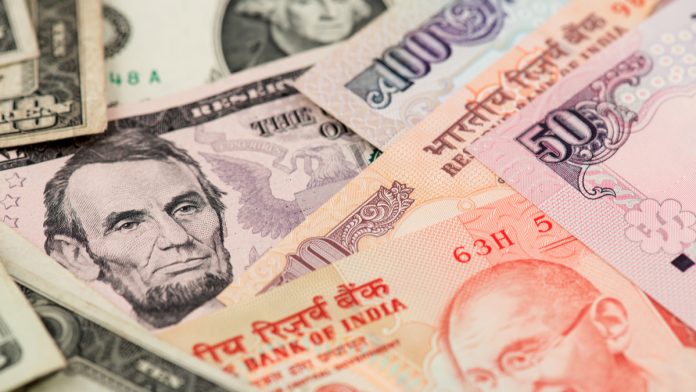- Indian Rupee (INR) rises after losses yesterday
- Indian Composite PMI rises to 7-month high
- US Dollar (USD) falls across the week
- Risk on mood dents demand for USD
The US Dollar Indian Rupee (USD/INR) exchange rate is rising, recovering from losses yesterday. The pair fell -0.11% in the previous session, settling on Thursday at 82.83. At 16:00 UTC, USD/INR trades +0.05% at 82.88 and trades in a range of 82.81 to 82.94. The pair is on track to fa;; -0.16% across the week after modest gains in the previous week.
The Indian rupee is edging lower today due to high importer dollar demand but is set for gains across the week.
Yesterday, data showed that India’s business activity expanded at the fastest pace in seven months in February amid strong demand for both manufacturing and service.
The data supports the view that India, the fastest-growing major economy, is expected to continue to grow at a steady pace over the coming year.
The Indian composite PMI rose to 61.5 in February, up from 61.2, putting it well above the 50 level that separates expansion from contraction for a 31st straight month.
Breaking the figures down, the manufacturing PMI for February rose to 56.7, up from 56.5, marking its highest level from September, and the services PMI was at a seven-month high of 62, up from 61.8.
The US Dollar is falling across the board. The US Dollar Index, which measures the greenback versus a basket of major currencies, trades at -0.02% at the time of writing at 103.93, marking a fourth day of losses.
The US dollar is on track to fall across the week despite more hawkish comments from Federal Reserve officials, stronger than expected jobless claims, and after the minutes of the Federal Reserve meeting, so officials played down the need for immediate hikes.
However, the US dollar is struggling amid the upbeat market mood. US indices rose to a record high in the previous session after encouraging results from Nvidia, and today, they are hovering close to those record levels. The risk on mood is resulting in safe haven outflows which has dragged on the US dollar.
Looking ahead, there are no more high-impacting U.S. economic data today. Attention will turn to next week, where the main focus will be US call PCE data, which is the Federal Reserve’s preferred measure for inflation.
Investors will be watching to see whether inflation continues to cool but also whether personal spending remains strong. High personal spending could continue to create inflationary pressures which would remove the need for the Federal Reserve to cut rates anytime soon.





